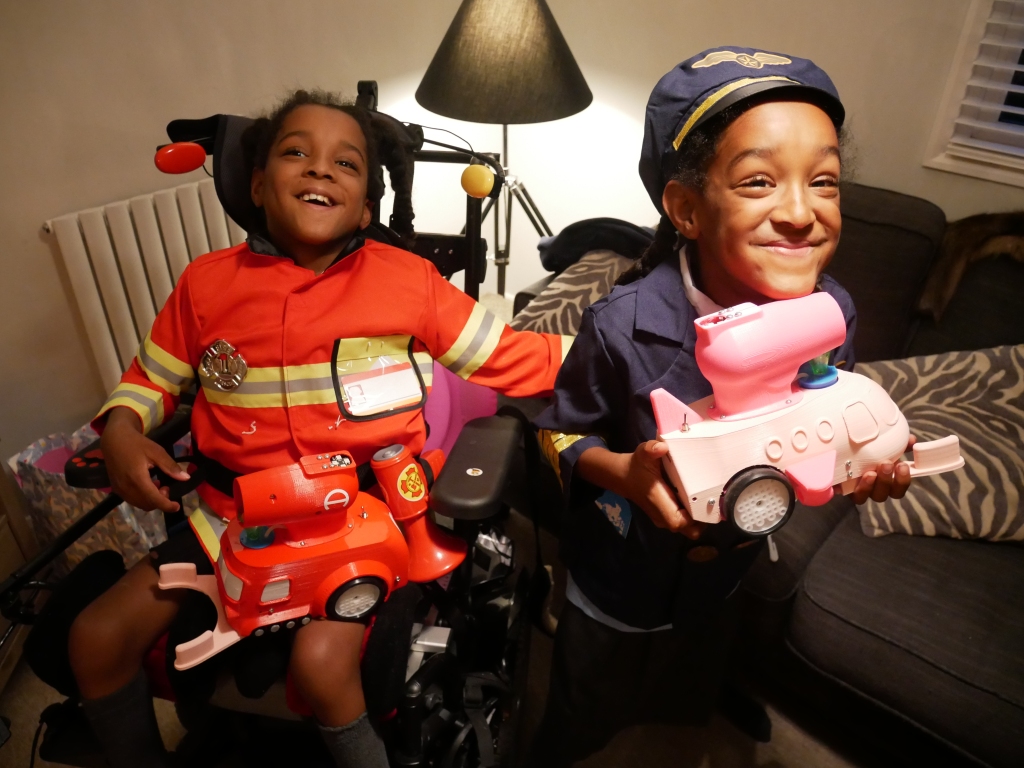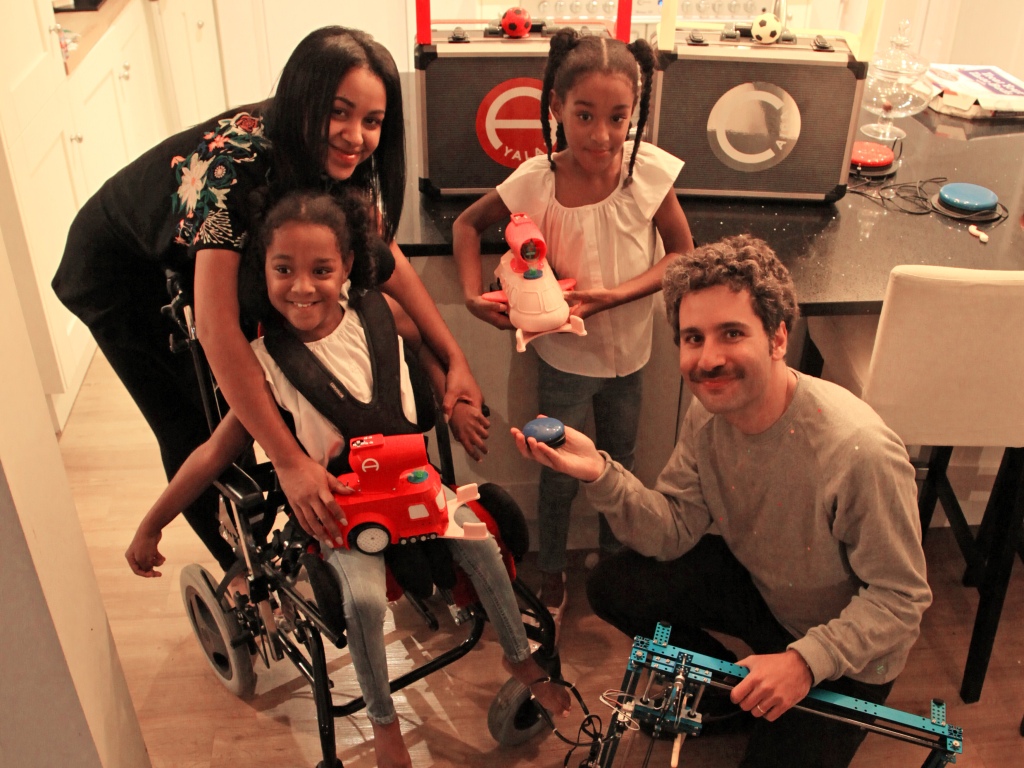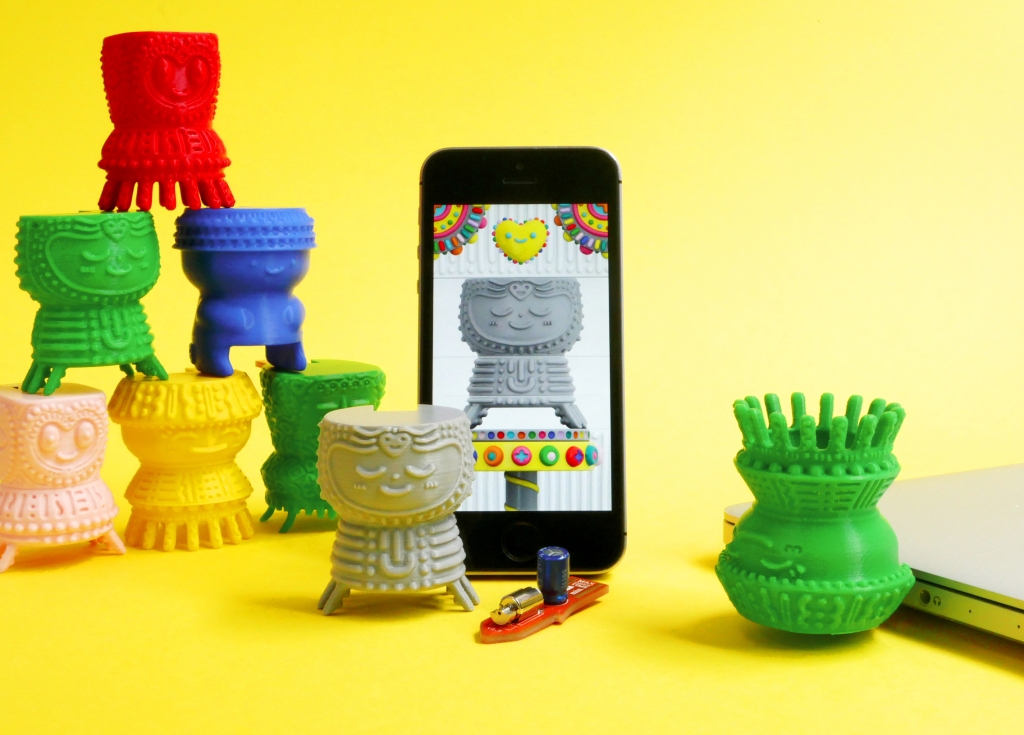Ross Atkin is a longstanding member of Machines Room who is now also a member of Cohort. He’s been involved in a huge range of projects at and via Machines Room. We caught up with him about what’s happening in his world, right now.
Can you tell us a bit about your background as a maker, your practice and areas of interest?
I was originally trained as a mechanical engineer and industrial designer and have worked designing everything from anti-terror bollards for the US Embassy to bits of vacuum cleaners for Dyson. I’m very interested in how infrastructure and public space can be made more accessible to disabled people, how digital technology can improve assistive technology and how to widen participation in design and technology. I work on research and development projects in the first two areas for organisations like Transport for London, Stannah Stairlifts, Marshalls Landscaping and TFH Special Needs Toys and run a business creating and selling products aimed to help the third area called The Crafty Robot. I’m also one of the eight members of the ‘Fix Team’ on the BBC’s Big Life Fix, a program about the development of one-off pieces of assistive technology to solve problems for individual disabled people, part of which is filmed at Machines Room.
Can you tell us about what you’ve been working on, and what you will be working on, during Cohort?
We have just finished making the second series of Big Life Fix. I built some robots for eight year old twin sisters Ayala and Caira, one of whom has Cerebral Palsy (causing her to have almost no control of her hands) and one of whom doesn’t. The objective was to create a play experience where they could participate as equals, so the robots are controlled by an app we developed that allows them to be driven using a single access switch (which Ayala can operate with her head). We also hacked an off-the-shelf drawing machine so we could control it with another app that worked in the same way. The forms of the robots were based on some drawings the girls and I made together and they were all 3D printed on the Ultimakers at MR. It was amazing seeing the girls’ faces as I handed them over their robots. The story went out as part of the Big Life Fix Children In Need special in November. I’ve built or helped build some other really cool stuff that you’ll be able to see in the main series that will go out some time this year.
 In the non-TV world I’ve been running an accessibility research project for TfL, working on an app to help older people improve their balance for Stannah, working on a really lovely digital system for creating amazing interactive experiences in sensory rooms and supporting the widespread deployment of a system to make roadworks easier to deal with for blind and partially sighted people.
In the non-TV world I’ve been running an accessibility research project for TfL, working on an app to help older people improve their balance for Stannah, working on a really lovely digital system for creating amazing interactive experiences in sensory rooms and supporting the widespread deployment of a system to make roadworks easier to deal with for blind and partially sighted people.
Over the next few months I’m hoping to run two Kickstarter campaigns for new Crafty Robot products – one is a collaboration with a former MR resident Gutless Wonder and current Cohort members Batch.Works called Wonderbots. The other is a collaboration with some people I met in Shenzhen. Wonderbots tries to make 3D printing radically more accessible in a really unexpected and charming way. It is trying to bridge the gap between downloading a pre-designed model from the internet and spending months learning a CAD package. It’s an app that allows you to design your own robot simply by swiping on the screen and then 3D print it and make it move by adding a little rechargeable motor called a Fizzbit. It’s based on Gutless Wonder’s incredible artwork and we are going to use Batch.Works’ 3D printing technology so we can efficiently print robots for users who don’t have their own printers. The other product is trying to lower the bar both technically and financially for people to get into building programmable robots. I’m really excited about both of them.
I’m also going to be working on some more accessible roadworks hardware, more sensory room fun and hopefully some intelligent street furniture.
Does having access to the machines, expertise and community at Machines Room influence your work and practice?
You come for the machines, you stay for the community 😉
Trying to work designing, prototyping and occasionally making and selling physical products out of a traditional co-working space is awful. Machines Room provides a whole load of facilities that makes doing this kind of work so much easier; from the machines themselves, the flexible spaces, the workshop and storage. It also makes a huge difference knowing that all the machines are being so well looked after by Mark, MR’s technician, so you can depend on them working – something that is important when making is your job, not just a hobby.
The benefit of being part of Machines Room runs way past the practicalities of the facilities. I have learned something from every member of the community and have entered into fruitful collaborations with quite a few. It is amazing to be able to call upon the skills and advice of so many talented people, knowing that they all share the same ethos and will give their time, brainpower (and sometime brawn) generously. Being part of a community like this enhances what all of us can make.
For example, when we were building the drawing machine for Ayala and Caira we couldn’t get it to work (the kit had incomplete and incorrect documentation). Luckily we were doing it on an evening when all of the CNC experts in the MR community happened to be around. They recognised that our drawing machine was actually just a baby version of the shop bot so with the combined efforts of Mark, David and Garth we finally got it working. We absolutely wouldn’t have been able to do it without them.
What are you finding most challenging?
As I am usually working on multiple projects at the same time it can be a challenge managing the volume of ‘in progress’ prototypes and builds.
What has been the highlight of your Cohort experience so far?
Meeting Gutless Wonder and seeing how Wonderbots came together from a germ of an idea to something that is far more awesome that any of us expected.
What is next for you after Cohort? Are you planning to continue this stream of work or start a new project?
Hopefully I’m going to be able to stay doing this kind of work. There will be new projects but the objectives to improve the lives of disabled people through design and to broaden the appeal of design and technology will run through them.


